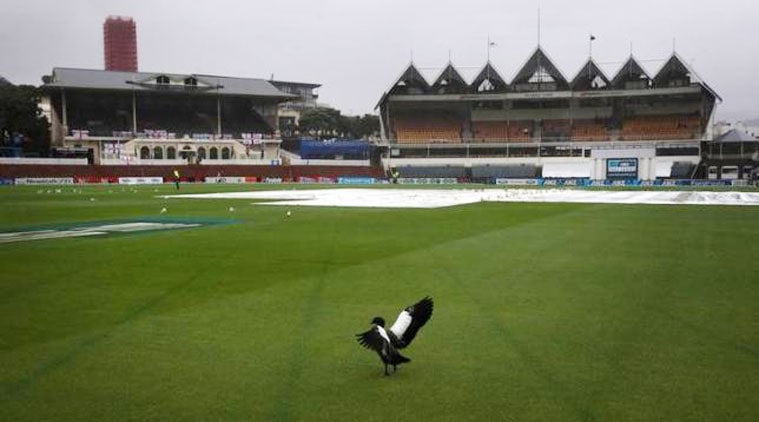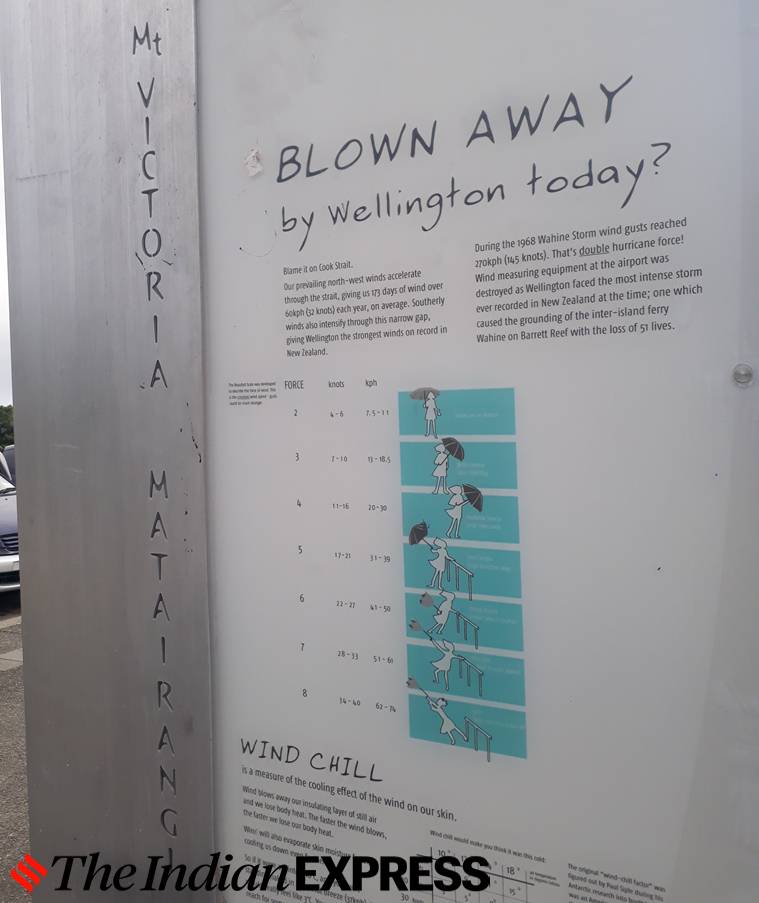 At the foot of the Mount Victoria is the Basin Reserve, where India embark on their biggest examination in the World Test Championship yet on Friday. (Express Photo by Sandip G)
At the foot of the Mount Victoria is the Basin Reserve, where India embark on their biggest examination in the World Test Championship yet on Friday. (Express Photo by Sandip G)
From Mount Victoria, a steep 200-odd metres uphill from the bustling city centre, one marvels at the distinct geography of sprawling Wellington. The serene Tasman Sea, trails of thin clouds that cling to the trees, aircraft shrieking on the runway, the chuffing trains, the cargo ships in the harbour, and the muddle of grey-brick-roofed single-storey houses. At the foot of the Mount is a round green spot, the Basin Reserve, where India embark on their biggest examination in the World Test Championship yet on Friday.
On a sunny day, the locals claim one could catch a fleeting glimpse of the cloud-scraping Kaikoura Ranges. It was gloomy on Tuesday, with sustained bursts of drizzle throughout the day drenching India’s optional training session, and the wind howling like it always does in Wellington, the second windiest city in the world after Chicago.
 Wellington’s Basin Reserve. (Source: Reuters)
Wellington’s Basin Reserve. (Source: Reuters)
“Windy Welly” has always been known for the powerful gusts that rifle through the Cook Strait, the body of water that divides New Zealand’s North Island from its South. It’s the city’s identity. At the mount, there’s a pictographic signage that describes the average force of the wind —beginning with a minimum of 7.5-11 kmph, it can rev up to 62-64 kmph. For as many as 173 days, that’s almost half the year, they get a wind speed of 60kmph. The highest ever recorded speed in 248 kmph, measured in 2011.
The city has a wicked sense of self-deprecatory humour too, celebrating its gusty reputation. In the Hollywood on Beverly Hills font, they have erected a “’Wellington Blown Away” sign on a hill in the Miramar suburb. From daily life — there’s an umbrella shop or repair shop in every street — to cricket games, it’s a throbbing presence in the city, where phrases like at the rate of knots and blown over are not just idioms, but an everyday reality. It has an upside too — sailors, windsurfers and kite-surfers come from afar to ride the vortex. Air pollution is non-existent as any fumes are whipped away and wind power is harnessed for electricity (Wellington has 62 turbines set on the hills around the city).

The Welly Wind is not perhaps as romanticised as the Fremantle Doctor at the WACA in Perth, but is certainly more feared and influential during a game. Not merely for hapless bowlers, especially those who have to bowl against the wind, but batsmen and catchers too. Slips-men misjudging catches and batsmen miscuing pull and sweeps are common occurrences, so are those of spinners struggling with their drift and fast bowlers labouring with their lines. Nobody prefers to bowl into the wind, historically prompting captains to thrust the chore on the youngest bowler in the team. It’s where umpires constantly keep raising their arms, not to give men out but to hold their hats firmly on their heads, while the heavy bails are never heavy enough, coming off during almost every over.
On a few instances, the winds have been so violent that camera operators have had to flee their tower of scaffolding. A groundsman was injured during a New Zealand-Australia Test match in 2010 after the covers were blown like a sail, sending him flying. The Decision Review System also proved unreliable because of the wind during that match, with the cameras shaking so much that an accurate predicted path couldn’t be computed. The biggest traffic jams in the New Zealand capital are caused by toppled billboards.
However, it’s the wind that makes the venue unique and equally dreaded — any Test played here would not be worth its salt without wind coming into the equation, for it creates its humour and demands heroics. It’s daunting if one is playing without acclimatisation. It might be that India have been in the country for a month, and have played a T20I in the city – at the Westpac Stadium – but Basin Reserve is a beast that can’t be easily tamed.
Even experienced local bowlers claim they haven’t yet mastered the element. Tim Southee sometime early in the series admitted: “The wind in New Zealand is always unpredictable, and it’s different from one venue to another. After all these years, I can’t single out a guaranteed method that would work.”
But after Prasanna, only three overseas spinners have picked five or more wickets — Bapu Nadakarni (in the same match), Muttiah Muralitharan and Keshav Maharaj three years ago. Among overseas pacemen, few enjoyed the gusty winds more than Courtney Walsh, an expert in bowling into the wind. Ishant Sharma, on his previous tour, too had furnished a masterclass here, though his availability this time around is uncertain. But even without him, India have a potent attack, and how they, especially talisman Jasprit Bumrah, channel the wind will be an engrossing narrative.
But irrespective of the wind, the city keeps rumbling on. On the mall road, where streets intertwine each other like a maze, the Bucket Fountain dropped water from one bucket into another and on passers-by, causing them to shriek and jump into one another’s arms to dodge the spray. Further down Cuba Street, clutches of the young and restless spill out along the pedestrian mall on their way from bars, restaurants and cafes. And Mount Victoria stood gazing at Wellington’s distinctly breathtaking geography.